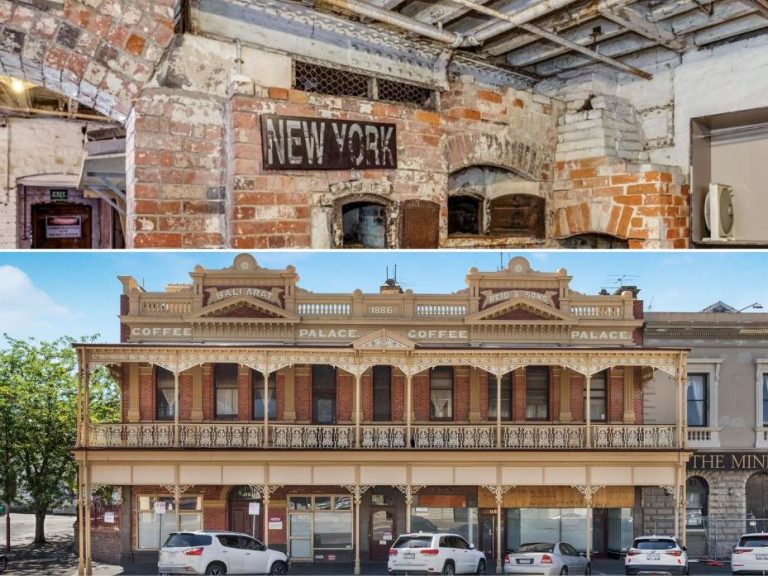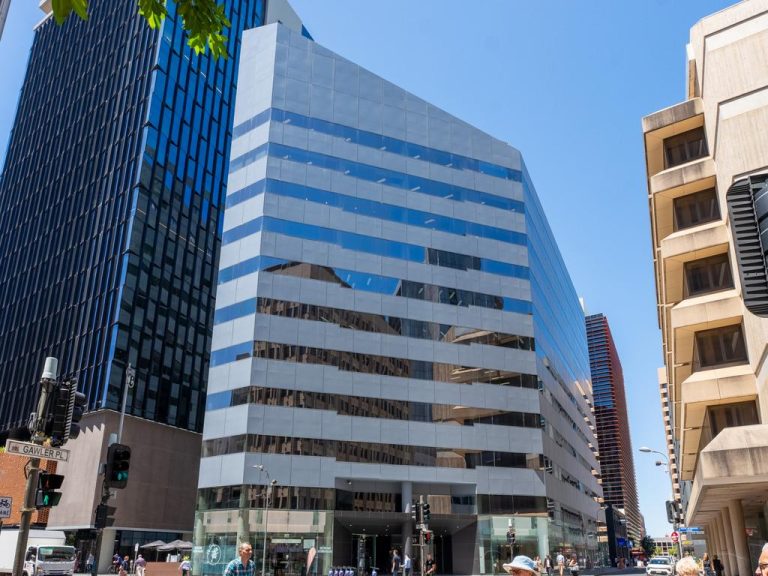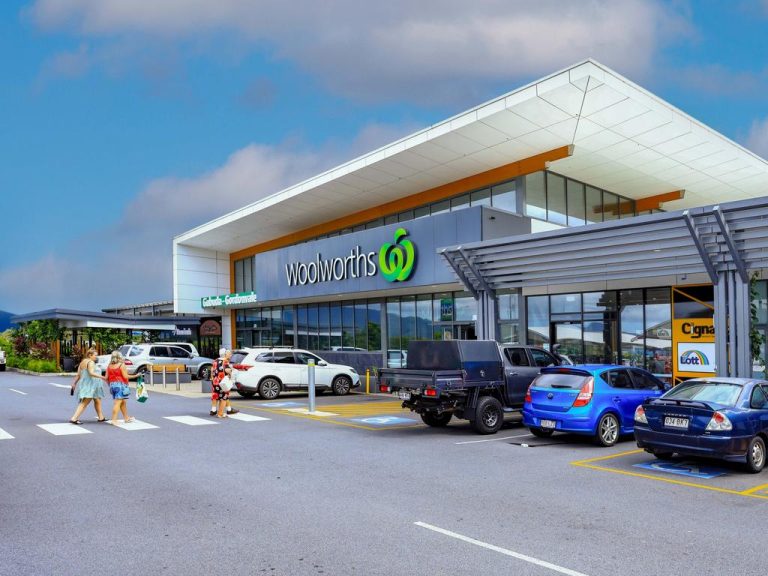Australia’s up-and-coming high streets: The changing face of Adelaide’s Henley Beach Road

As the wave of gentrification continues to transform inner west Adelaide, the area’s most prominent high street is also undergoing significant change.
Established in the late 1800s as the main thoroughfare from the CBD to the seaside, Henley Beach Road stretches 7.7km from Adelaide Parklands in the east to its namesake suburb, Henley Beach, in the west.
According to Peter Koulizos, Master of Property at the University of Adelaide, the 2km stretch of Henley Beach Road that runs through the suburbs of Mile End and Torrensville has experienced the most significant change in recent years.
“Back in the early 1990s, it had maybe four fish and chip shops and a pizza bar,” remembers Mr Koulizos. “Now there are well over 30 cafes and restaurants just along that strip.”
Mr Koulizos said the transformation of Adelaide’s inner west mirrors the journey of Sydney and Melbourne some 20 years ago.
“Traditionally the eastern suburbs of Sydney and Melbourne are where the rich people lived and the western suburbs are where the workers lived,” he explained. “But that all changed.”
“It’s the same for Adelaide. And what they all have in common is that they’re close to the city – which is one of the key elements of gentrification.”
Mr Koulizos added that while the characteristics of gentrification have somewhat changed over the last 50 years, the principles remain the same.
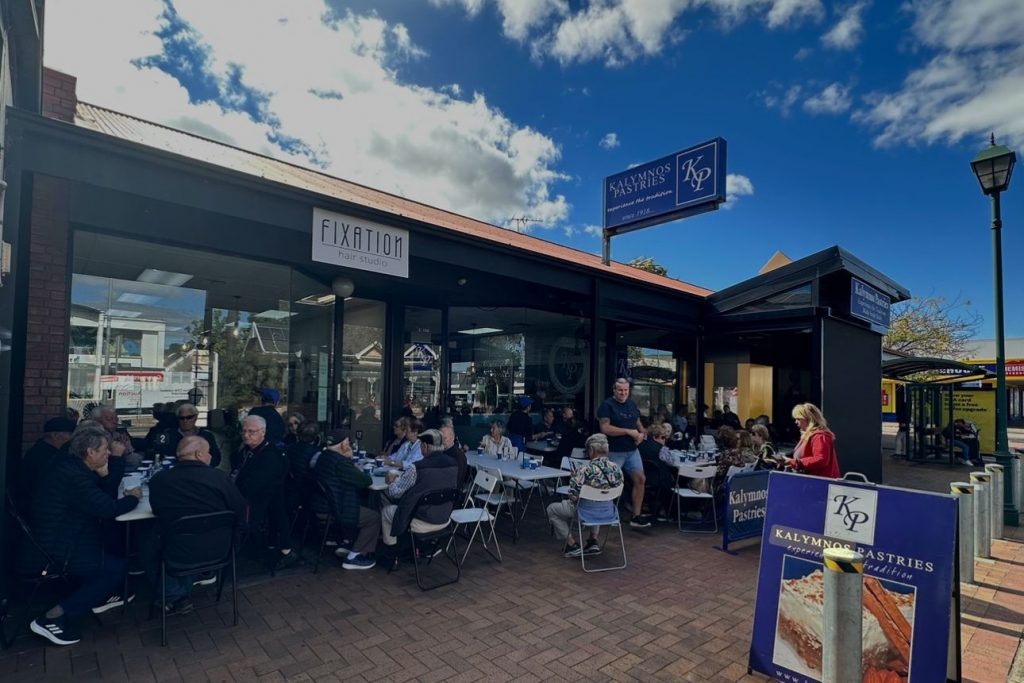
Kalymnos Pastries opened in 1995 and is a popular spot with locals and visitors. Picture: supplied
“Once upon a time you knew a place was gentrifying if there were Greek and Italian restaurants popping up. Nowadays it’s Afghan and Japanese restaurants, hot yoga studios and tattoo parlours,” he explained.
Greek heritage
Renowned today for its multicultural retail and business community and local icons such as the Thebarton Theatre, the Henley Beach Road of the 1800s was once a small strip of Anglo-owned grocers, butchers and drapery shops.
As waves of migration occurred during the 1950s, the road’s surrounding suburbs – Torrensville in particular – became home to Greek and Italian immigrants, who introduced continental café culture and Mediterranean inspirations to the area.
Lifelong resident and fourth generation pastry chef George Diakomichalis remembers the Henley Beach Road of his youth as a bustling hub of Greek families.
“When I was a kid we would all go shopping as a family on Thursday nights. I remember seeing all these teenagers hanging outside the supermarket and 99% of them were of Greek and Italian heritage.”
When Mr Diakomichalis opened Kalymnos Pastries in 1995, he chose the area he was born and bred in.

George Diakomichalis has been a lifelong resident of the area, and opened his patisserie Kalymnos Pastries on Henley Beach Road. Picture: supplied
“It made perfect sense to open the business on Henley Beach Road because it’s where my cultural foundations were already established,” he explained. “I was surrounded by a supportive and familiar culture.”
The tides of change
From the 1970s, Asian migrants brought another burst of cultural change to Henley Beach Road, opening many speciality food stores and restaurants.
More recently, the road has seen an influx of Middle Eastern, Indian and African food culture.
Today, some of the most popular businesses along the Mile End and Torrensville stretch includes Little Canton Chinese, Singh Sweets & Punjabi Restaurant and Parwana Afghan Kitchen – arguably one of Adelaide’s most popular restaurants.
“That’s the beauty of the street now – there are so many different cultures that have come together,” said Mr Diakomichalis.
“Everyone can enjoy the best of everything. Many of our regular customers are people from all kinds of backgrounds.”
The new guard
House Of Daggers Tattoo Collective is one of many businesses representing the new guard of Henley Beach Road.
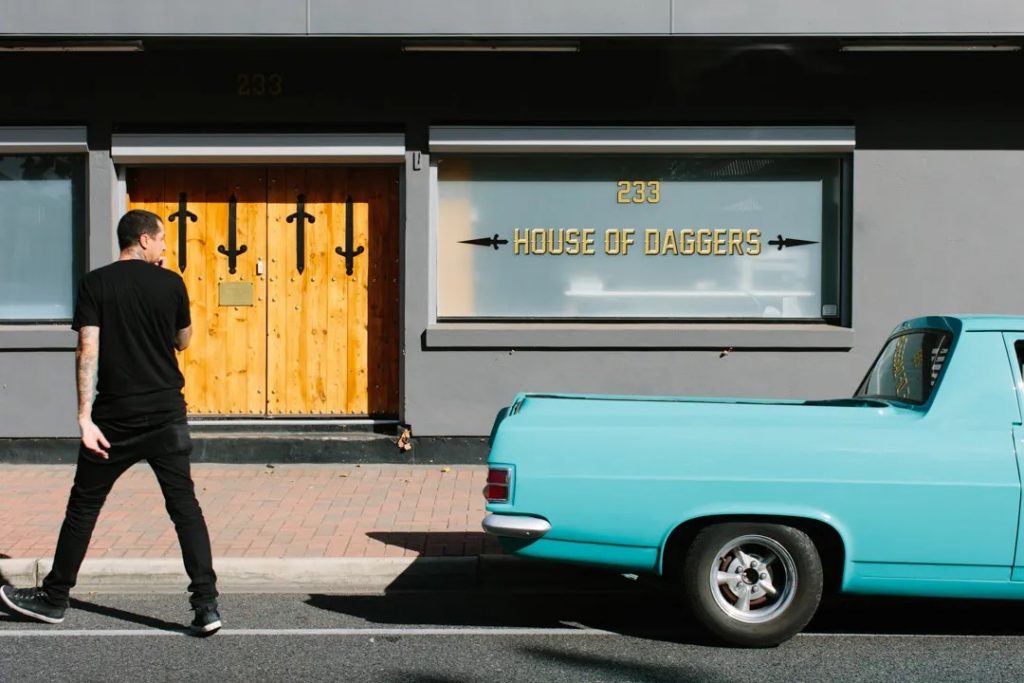
House of Daggers opened on Henley Beach Road in 2015. Picture: supplied
In 2015, Simone-Clare Hede and her business partners decided to open their studio on Henley Beach Road due to its proximity to the city and distance from other tattoo parlours.
“It’s a really accessible location from most places around Adelaide. But more importantly, with most tattoo parlours being in the CBD, we’re far enough away from other businesses,” she explained.
“You wouldn’t just open up on the same road as someone else – that would be rude. It’s a respect thing.”
Ms Hede noted the strong sense of community as one of the most beneficial aspects of running a business on Henley Beach Road.
“The café just down the road, Pixie and Hawke, will often give our customers discounts. Anyone who comes in to get a tattoo can walk down there and get a discount on their coffee,” she told realcommercial.com.au.
“We also get a lot of walk-in clientele from the gym just behind us, so there’s good synergy there.”
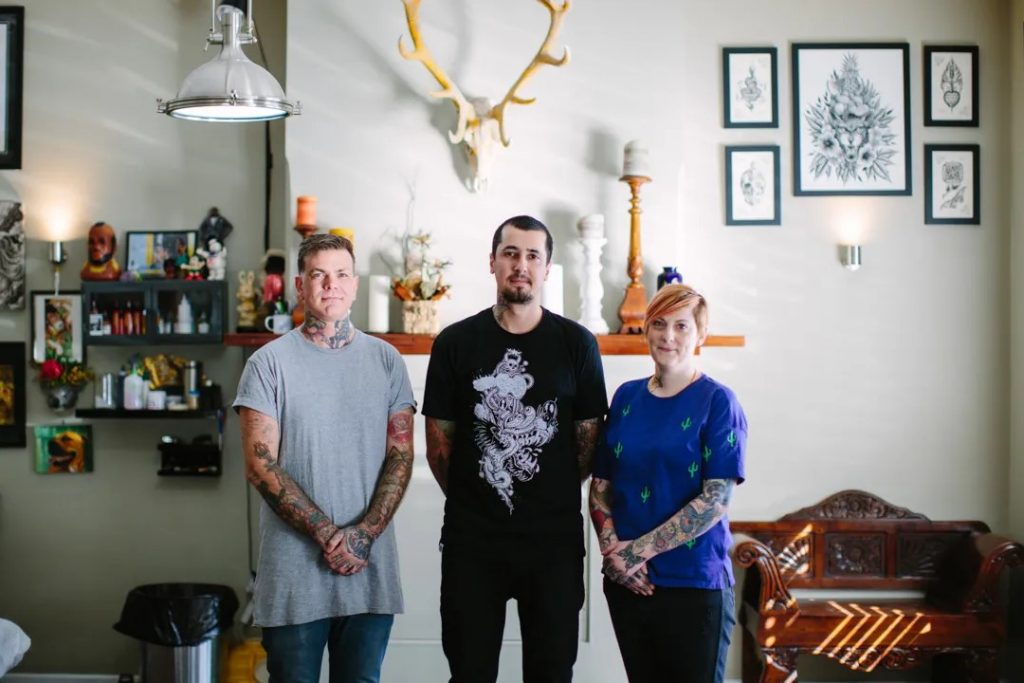
Simone-Clare Hede, Jamie Brockenbrower and Stu Pagdin at House of Daggers. Picture: supplied
Inner west is best
In 2018, Peter Koulizos tipped the inner west as Adelaide’s next area for substantial growth.
According to PopTrack, the median price of a home in Torrensville has shot from $603,500 in 2019 to $941,500 in 2024.
Likewise, in Mile End, the median house price has jumped from $595,000 in 2019 to $900,000 in 2024.
In both suburbs, the number of serious buyers looking for a property far outweighs the number of available homes on the market.
“It’s become a very popular area with white-collar workers who commute to the city because they can afford to pay the higher rent,” said Mr Koulizos.
“And if they’re buying, they can afford to do extensions and renovations on the many period-style character homes found in the area.”
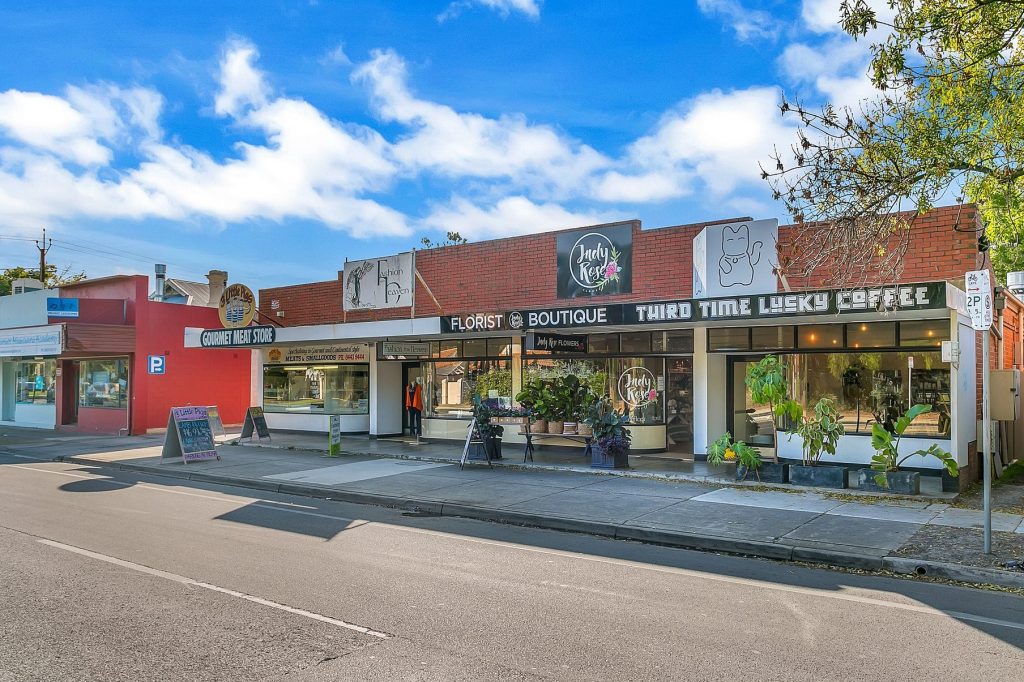
Henley Beach Road stretches 7.7km from Adelaide Parklands in the east to Henley Beach in the west. Picture: realestate.com.au/buy
Mr Koulizos said it generally takes 30-40 years for an area to peak and believes Henley Beach Road is at the halfway point of its gentrification journey.
Last month, a three-bedroom character home at 234 Henley Beach Road in Torrensville sold for $670,000 – well below the suburb’s median price.
Thanasi Mantopoulos of LJ Hooker said the home was snapped up by a local investor who has plans to renovate the property.
“It went for a very reasonable price because it has no parking, which is a premium feature for a property on Henley Beach Road,” explained Mr Mantopoulos.
“It was definitely an outlier, however there are still houses within that price range to be found in the area.”
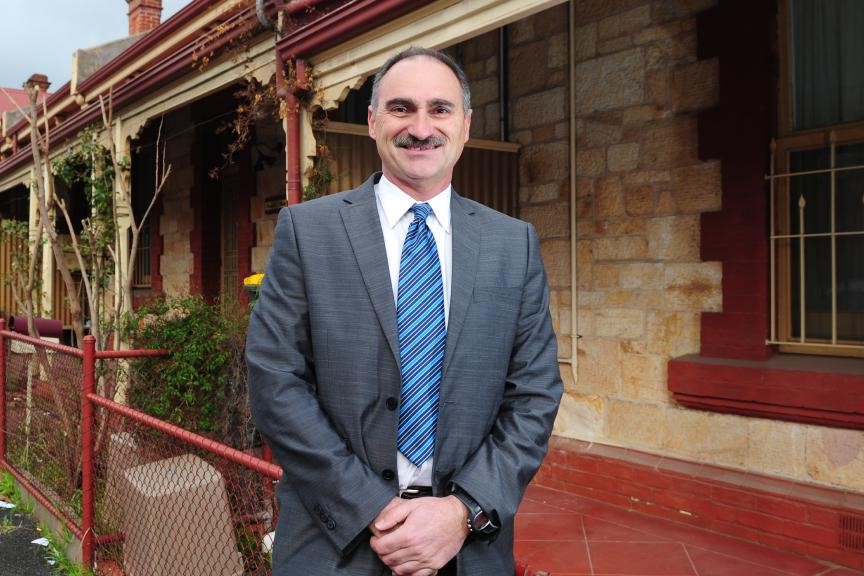
Peter Koulizos believes Henley Beach Road is at the halfway point of its gentrification journey. Picture: Mark Brake
Mr Koulizos also noted that in the past two years, both a Coca-Cola bottling factory and the West End Brewery had been offloaded in the neighbouring suburb of Thebarton to make way for mixed-use development.
“It’s another sign that light industry is moving out and developers are moving in to provide facilities and amenities for the new, younger and wealthier demographic moving into the area.”
The future of Henley Beach Road
Last month, the City of West Torrens council announced plans to once again reinvigorate Henley Beach Road, with Adelaide Mayor Michael Coxon citing its “huge potential for growth.”
“Over the years development has seen footpaths become quite narrow and heavy traffic flows which cause congestion, excess noise and emissions,” Mr Coxon said.
“We have a real opportunity to prepare a long-term strategy for this area and to improve its appeal for our local community and visitors and create a vibrant tourism destination.”
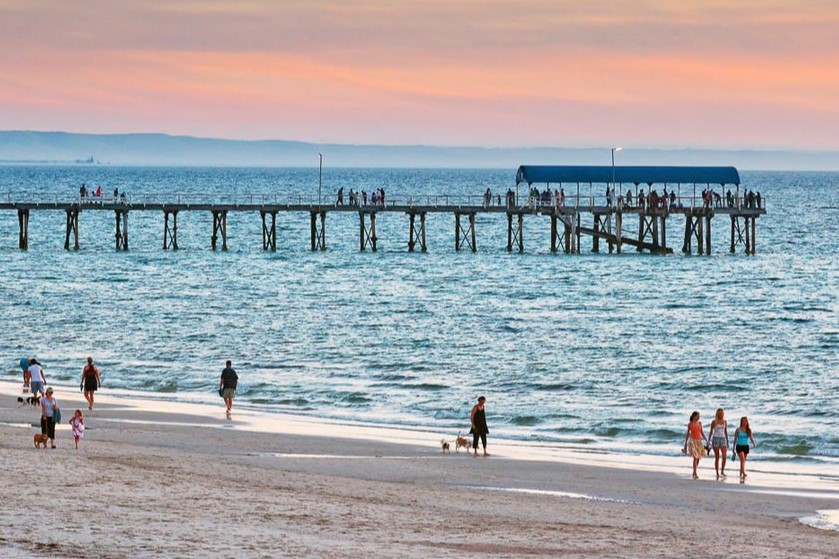
The Henley Beach Jetty is a short walk from Henley Beach Road. Picture: realestate.com.au/buy
A major part of the proposed plan is to divert the major North-South Corridor thoroughfare underground. The result would be a far more pedestrian-friendly Henley Beach Road, said Peter Koulizos.
“It’s a great opportunity to attract even more people to the shops and the amenities in the area. It will also make the area a lot easier to get to.”
George Diakomichalis believes further amenities like a cinema would also aid the area’s continued growth.
“That’s the kind of attraction that could make Henley Beach Road more of a destination for Adelaide,” he said. “A place where locals and visitors can spend the whole day.”

